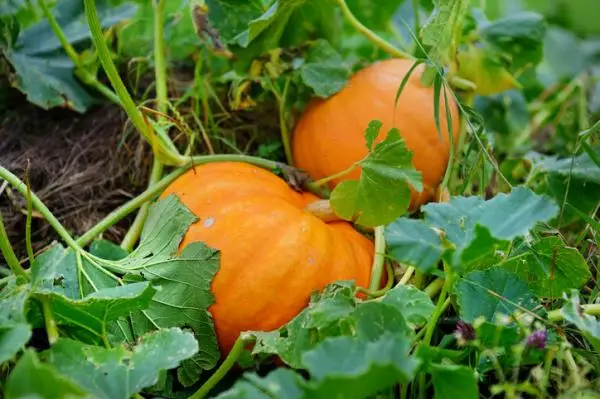As Halloween approaches, everyone thinks of pumpkins, the holiday’s iconic vegetable. This plant is actually a whole genus, whose fruits in their different varieties and species have been used throughout the world for things as different as food consumption or as containers or musical instruments. In addition, the consumption of the pulp and seeds of this vegetable provides great health benefits.
If you want to learn when and how to plant pumpkins , join us in this article.
When to plant pumpkins
There are two main ways to grow pumpkins and the best time to plant will depend on the way you choose.
When to plant pumpkins in their final location
The first option is to plant them directly in their final location. This plant accepts this sowing method without problems and, in this case, we must carry it out in the early-mid spring , once the last frosts have passed, which could destroy the seedlings.
When to seed pumpkins
The other method consists of sowing in a seedbed, to be able to advance the entire crop and transplant it outside in spring, so that we will have gained several months. If you do so, you can prepare your seedlings at the end of winter .
Here we are going to follow this last method, although if you choose the first one, do everything the same but directly in its final location and from the end of the frosts.

How to sow pumpkin seeds
Follow these steps and directions to plant pumpkin seeds in a seedbed so that by spring you can transplant the pumpkin seedlings to their final location.
- The first thing is to prepare the seedlings with their substrate. As always, we recommend using a seedbed substrate. You can buy it directly in a specialized store or make the mixture yourself, which will be cheaper and ensures that you have the desired components. The mixture of peat, coconut fiber and worm humus with an addition of perlite and vermiculite is always a more than safe bet in this regard.
- Take your pumpkin seeds and leave them for about three hours soaking in water.
- Fill your seedbeds leaving room for some more substrate later.
- Leave the seeds in a horizontal position on the substrate and then add an extra centimeter of it.
- Then irrigate by spraying water or with a fine jet shower, moistening the entire substrate of the seedbed.
- Place the seedbed where it receives direct sunlight to avoid malformations in the seedlings, near a window and at a constant and warm temperature.
How to plant the pumpkin plant
About 6 weeks after planting , your pumpkins will be ready to be transplanted to their final outdoor location, with spring already underway. Follow these tips for planting pumpkins :
- You should locate your pumpkins in a place where they receive direct sunlight and for at least 8 hours a day.
- Pumpkin plants take up a lot of space, so it is recommended to leave a space of around 2 or 3 meters between them, so that there is enough distance for them to develop as much as they can.
- You will need the soil to be loose and have good drainage if you want your pumpkins to grow optimally.
- Similarly, although it is not necessary, rich soils help this crop a lot.
- Once the soil is loosened, prepare a hole a little deeper than the bottom of your seedbed, and bury the pumpkin about an inch deeper than it was before.

Pumpkin plant: basic care
Now that you have seen how to sow and plant these vegetables, we give you these guidelines to know how to care for pumpkins :
Watering the pumpkins
In addition to its needs for sun, which we have already mentioned, the pumpkin also needs abundant and frequent waterings , so that the soil never gets too dry. This is precisely why it is so important that the soil has good drainage, since otherwise puddles would form that could rot the roots of the plant. If the waterings are not regular, it is probable that the fruits of the squash will crack as they develop.
Temperature
Regarding the growing temperature, the pumpkin shares characteristics with other plants of its family, such as cucumber, zucchini and melon. It needs a lot of sun and thrives well in a climate of around 20ºC, being able to withstand temperatures between 10ºC and 30ºC without too many problems. Beyond that margin, we would be taking risks.
Pass
The plant will also appreciate the application of fertilizers rich in nitrogen and potassium in its fruiting season. It is advisable to use natural fertilizers such as humus and banana tea for this, and increase the watering a little when it begins to bear fruit.
About six months after the first planting, your pumpkins should be ready for harvest.
